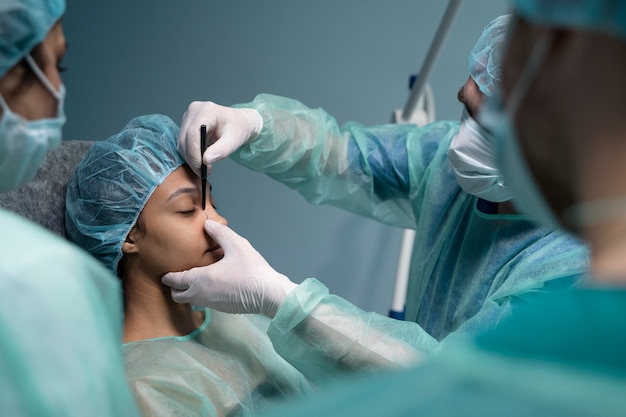Rhinoplasty, commonly referred to as a nose job, is a surgical procedure aimed at reshaping or reconstructing the nose for either aesthetic or functional reasons. People pursue rhinoplasty to correct breathing issues, fix birth defects, or enhance facial harmony. Whether for medical or cosmetic purposes, the approach to the surgery significantly influences the outcome, healing process, and overall experience. The two primary approaches are open rhinoplasty and closed rhinoplasty. In the context of Rhinoplasty Dubai, knowing the difference between these techniques is crucial for making informed decisions about your treatment journey.
What Is Open Rhinoplasty?
Open rhinoplasty involves making an incision on the columella—the strip of tissue separating the nostrils. This small external cut allows the surgeon to lift the skin and gain full visibility of the nasal structure. The open approach is typically chosen when the surgery involves significant reshaping, reconstruction, or revision procedures.
When Is Open Rhinoplasty Recommended?
Open rhinoplasty is often preferred in cases requiring:
- Extensive reshaping of the nasal tip
- Correction of asymmetry or deformities
- Complex revision procedures
- Grafting or structural alterations
The open technique provides better visibility and access to the nasal framework, enabling more precise modifications. Although it may leave a very fine scar, it is usually well-hidden and fades over time.
Benefits of Closed Rhinoplasty
| Benefits | Explanation |
|---|---|
| No External Scars | All incisions hidden inside the nostrils |
| Reduced Recovery Time | Less swelling and faster healing |
| Shorter Surgical Time | Generally takes less time than open approach |
| Suitable for Primary Procedures | Works well for patients with straightforward needs |
What Is Closed Rhinoplasty?
Closed rhinoplasty, also known as endonasal rhinoplasty, is a technique where all incisions are made inside the nostrils. This means there are no visible scars, and the recovery is generally faster. However, it offers limited access and visibility compared to the open approach.
When Is Closed Rhinoplasty Ideal?
This method is suitable for individuals who require:
- Minor to moderate reshaping
- Nasal bridge refinements
- Small tip modifications
- Faster recovery times
Closed rhinoplasty is typically less invasive and can be ideal for patients who want subtle improvements or have no history of nasal trauma or surgery.
Comparing Open vs. Closed Rhinoplasty: Procedure Overview
| Feature | Open Rhinoplasty | Closed Rhinoplasty |
|---|---|---|
| Incision Location | Across the columella | Inside the nostrils |
| Visibility of Nasal Structure | High visibility and exposure | Limited visibility |
| Scarring | Small external scar | No visible scar |
| Suitability | Complex corrections and revisions | Minor adjustments |
| Surgery Duration | Slightly longer | Generally shorter |
| Recovery Time | May take longer | Typically quicker |
Benefits of Each Rhinoplasty Type
Aesthetic and Functional Outcomes
Both techniques aim to improve nasal aesthetics and function. However, the choice between open and closed rhinoplasty must be personalized. Open rhinoplasty offers unparalleled access, making it suitable for individuals seeking dramatic changes. Closed rhinoplasty, on the other hand, provides effective yet subtle refinements with less visible disruption.
FAQs
1. Is one technique safer than the other?
Both techniques are safe when performed by a qualified surgeon. The choice depends more on the complexity of the procedure and the desired outcome.
2. Will I have a visible scar after open rhinoplasty?
Yes, but it is typically small and discreet. Most patients report that the scar fades significantly within a few months.
3. Can I switch from closed to open rhinoplasty if needed?
Yes, especially in revision cases. If the closed approach does not achieve the desired outcome, a future open procedure is possible.
4. Which approach results in more natural-looking outcomes?
Both can produce natural results. The key lies in the surgeon’s skill and an individualized treatment plan.
5. How long will the swelling last after rhinoplasty?
Most swelling subsides within 2–3 weeks, but minor swelling can last several months. Final results may take up to a year.
Final Thoughts
Understanding the difference between open and closed rhinoplasty is essential when considering nose reshaping surgery. Each method has its advantages and is best suited to specific needs and goals. By consulting with an experienced specialist, patients can make informed decisions that align with their desired outcomes, whether subtle refinement or comprehensive correction.































